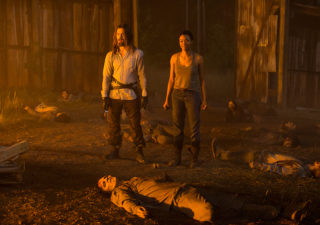While Microsoft was focused on E3 and its Xbox One and Xbox One X consoles, across town in Los Angeles, Rémy Martin debuted a new Microsoft HoloLens mixed reality experience that will travel the world for some alcohol-infused storytelling.
The “Rooted In Exception” experience takes place on a specially designed table that allows guests, wearing one of two HoloLens developer edition goggles, to see how the cognac brand’s blend is crafted. The 90-second, mixed-reality experience transports viewers to their Cognac Grande Champagne and Cognac Petite Champagne vineyards with Baptiste Loiseau, the cellar master of the house of Rémy Martin. Loiseau explains the cognac-making process from start to finish.
Maximilian Doelle, chief holographic officer at Kazendi, the European HoloLens development studio who created the experience, told AListDaily that one of the main advantages for consumer brand experiences with mixed reality is the high memory retention through the combination of 3D visualizations, 3D sound and haptics of the real world. In addition, the user feels much more comfortable being able to see the real world compare to VR and never get a headache from it.

“For brands, this also means that the solution is easily scalable since the only thing you need is a HoloLens, which fits comfortably into a backpack,” Doelle said. “In case a brand wants to update the experience for a local market, that’s not a problem—we can push remotely to the device and assist worldwide. “
Through mixed reality, groups of people, whether colleagues or consumers, can take part in shared holographic experiences and thereby enhance their capacity to communicate and collaborate with one another, Doelle added.
Emma Medina, vice president of marketing at Rémy Martin, told AListDaily the brand had experimented with augmented reality through a lifestyle shoot with Robin Thicke and virtual reality through brand ambassadors in the past because these technologies provide an interesting and interactive way to tell the brand story.
“France is far away and we can transport our clients there,” Medina said. “This technology allows us to take our customers there to understand the heritage and craftsmanship that goes into Cognac.”
HoloLens opened up a new opportunity for the brand to connect with consumers within restaurants, bars and stores around the globe.
“This was interesting because you can experience both the screen aspect of it as well as the physical world,” Medina said. “In VR you’re only in the creative space. With mixed reality you can do both, which allows sales people and brand ambassadors to interact with multiple customers at the same time.”
Medina is currently working her sales teams to identify different stores, on-premise restaurants and lounges to invite clients to experience this mixed reality table. The plan is for this experience to embark on a global tour after this initial launch. The event combines next generation technology with drinking.
“We want to bring this to as many clients as possible around the world,” she said. “While guests are interacting with the mixed reality experience, there’s a full tasting of Rémy Martin XO cognac as well as food pairings that highlight the different tasting notes and opulent aromas that the liquid delivers.”
In addition to the mixed reality technology, the specially designed table, which highlights the landscape of Cognac, France is key to the traveling experience. When customers aren’t wearing one of the HoloLens devices, they can see the regions where the wineries are based.
With Rémy Martin XO cognac retailing for $160, Medina said the clients tend to be affluent entrepreneurs and professionals that live in urban or metro centers throughout the US. They’re also very tech savvy, involved in social media and follow all the latest trends in lifestyle and innovation. Although the brand skews male, there is a very robust female following.
“Unlike whiskey, cognac has a very accessible taste because it’s smooth and rich and complex, which attracts a diverse group of consumers,” Medina said. “We tend to skew to an older, affluent consumer, but our sweet spot is between 30-and-40 years old.”
In the future, Medina sees the next natural step for mixed reality would be to enable guests to use their own smartphones.
“Once we saw the (mixed reality) images come alive and the elements move and spin around, it felt like we were walking into the future,” Medina said. “We’re excited about how far we can take this. We’ve only begun to scratch the surface with this technology. We have a full range of products and we can tell the story of our cellar master and wine growers and how to pair different cognac with food and explore the cocktail culture.”
 NBA star and celebrity spokesperson Karl-Anthony Towns made appearances at Activision’s E3 booth to further spur excitement on the show floor, but the real spectacle would happen high up in the sky. On the opening day of E3, two groups of World War II-era planes flew over the Los Angeles Convention Center to promote the upcoming game. The two flybys made multiple passes over the South Hall of the convention center, flying approximately 800-1,000 feet off the ground. The first group included a C-53 transport plane while the second squadron included AT-6 planes based in Van Nuys, California.
NBA star and celebrity spokesperson Karl-Anthony Towns made appearances at Activision’s E3 booth to further spur excitement on the show floor, but the real spectacle would happen high up in the sky. On the opening day of E3, two groups of World War II-era planes flew over the Los Angeles Convention Center to promote the upcoming game. The two flybys made multiple passes over the South Hall of the convention center, flying approximately 800-1,000 feet off the ground. The first group included a C-53 transport plane while the second squadron included AT-6 planes based in Van Nuys, California.
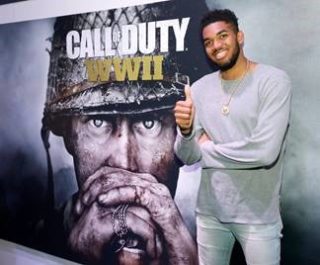 Harvey also detailed how Karl-Anthony Towns became involved with Call of Duty’s promotion. “We first met Karl-Anthony during Call of Duty’s release in 2015, and more recently sponsored him last year during our fan celebration event, Call of Duty XP,” he said. “His knowledge of Call of Duty’s history and interest in the various aspects of gameplay is impressive. This year, with our return to the Call of Duty franchise’s roots in World War II, we felt E3 would be a great opportunity to sponsor his appearance and host him here at the show. He was able to spend time with and play Call of Duty: WWII and met some of the team. He was great to work with, and an absolute pleasure.”
Harvey also detailed how Karl-Anthony Towns became involved with Call of Duty’s promotion. “We first met Karl-Anthony during Call of Duty’s release in 2015, and more recently sponsored him last year during our fan celebration event, Call of Duty XP,” he said. “His knowledge of Call of Duty’s history and interest in the various aspects of gameplay is impressive. This year, with our return to the Call of Duty franchise’s roots in World War II, we felt E3 would be a great opportunity to sponsor his appearance and host him here at the show. He was able to spend time with and play Call of Duty: WWII and met some of the team. He was great to work with, and an absolute pleasure.”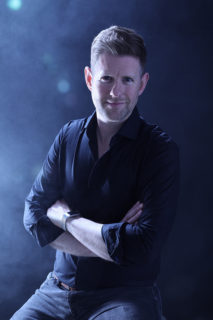
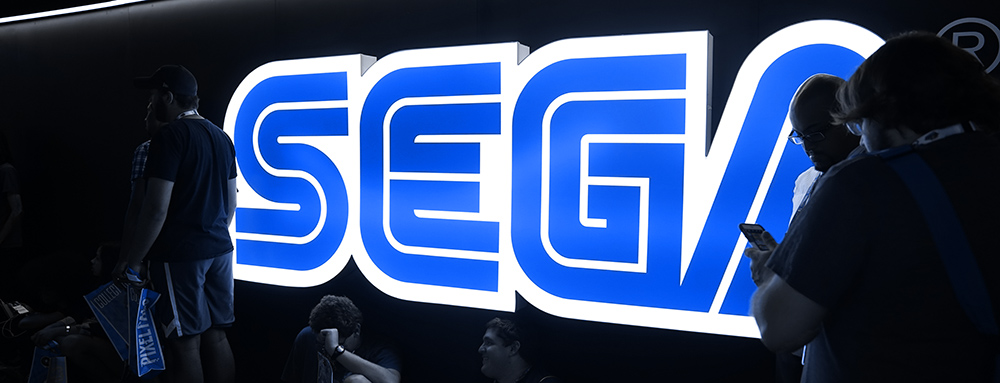

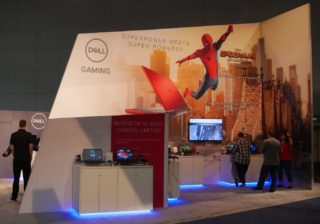 “For Alienware and Dell, it isn’t just about what’s going to sell products. It’s also about making sure we’re proactively engaging with gamers,” said de Zayas. “You will get solid gaming performance at more affordable price points from Inspiron Gaming, and from Alienware, you’re going to get the best technology out there.”
“For Alienware and Dell, it isn’t just about what’s going to sell products. It’s also about making sure we’re proactively engaging with gamers,” said de Zayas. “You will get solid gaming performance at more affordable price points from Inspiron Gaming, and from Alienware, you’re going to get the best technology out there.”